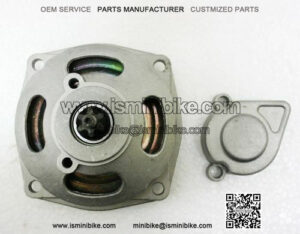Veteran dirt bike and ATV riders can identify a clutch gone bad quite easily but new riders may not know what’s happening. If you ride a car with a manual clutch, the signs you need to get it checked on your dirt bike or ATV are quite similar.
The big one is gear slippage. Before you panic about a bad clutch first check the chain and sprockets. Replace everything even if one tooth is missing or the chain looks weathered and worn. If all looks good and you still slip when there’s appropriate slack on the chain then chances are the clutch is burned out. But before you start taking things apart…
Next, check the clutch cable. If it’s not adjusted properly or the cable is frayed or binding it can mimic the symptoms of a bad clutch. Clutch control should be smooth and allow full engagement. Tighten and lubricate if necessary. Last on your check list is taking a test ride…
When riding, if the gears refuse to shift or refuse to disengage then the clutch either needs adjustment or replaced. The other tell-tale sign is the clutch smells. The clutch on a dirt bike or ATV is bathed in oil so as it wears down it not only slips but stinks like burning oil. If you ride a 4-stroke you’re less likely to encounter clutch problems. You have to fan the clutch a lot on a 2-stroke so you’ll be well acquainted with clutch adjustments and replacements if you ride a 2-stroke.
Understand that the clutch is more than just fibers, steels and springs. The pressure plate and hub wears out along with the clutch pack. When replacing your clutch do it the right way and replace everything. Yes, it’s expensive, but you’ll just wear out the new clutch kit faster than if you replace everything at once.
Replacing a dirt bike clutch is easier than it sounds and with a little practice you can easily incorporate this part of maintenance on your list of DIY service intervals.
About Dirt Bike Clutch
“dirt bike clutch”
“dirt bike clutch lever”
“automatic dirt bike clutch”
“electric dirt bike clutch”


